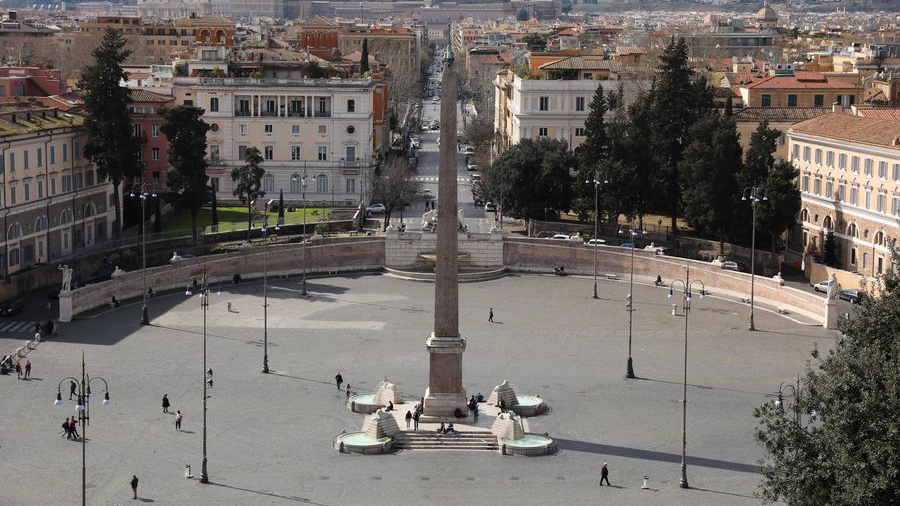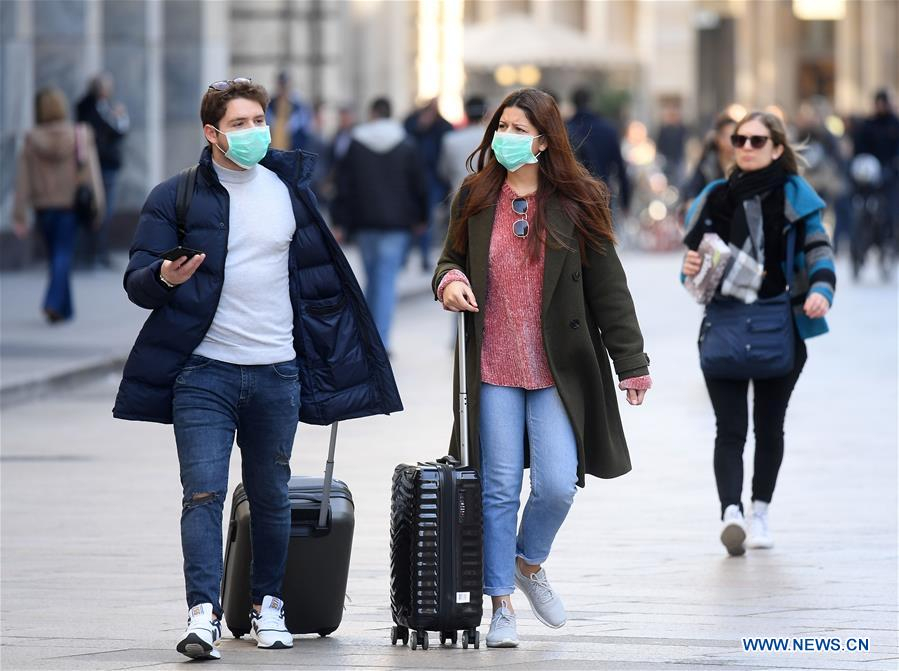
Piazza del Popolo in Rome, Italy, on the first day of the lockdown of the country, March 10, 2020. /Xinhua
Piazza del Popolo in Rome, Italy, on the first day of the lockdown of the country, March 10, 2020. /Xinhua
Editor's note: Matteo Giovannini is a finance professional at the Industrial and Commercial Bank of China in Beijing and a member of the China Task Force at the Italian Ministry of Economic Development. The article reflects the author's views and not necessarily those of CGTN.
The consequences that COVID-19 has been having on Italy, the first Western democracy to be seriously hit by the virus, can be easily explained by the daily statistics that sadly show the country as the world's second in terms of the number of deaths after the United States and third in terms of confirmed cases after the United States and Spain.
Italian authorities that were initially criticized for not having taken strong enough initiatives instead of taking a step-by-step approach to fighting COVID-19 imposed the lockdown to the most affected regions in the north of Italy to prevent the contagion and then in early March, having observed that the measure of containment didn't work as hoped, the lockdown was imposed to the rest of the country by closing the national border and by forcing people to isolation until May 3 calling this period Phase I.
After more than five weeks of forced isolation, the number of new cases and deaths are finally slowing down, a sign that the lockdown policy is starting to pay off, and this aspect, combined with the warmer weather of the spring season that is predicted to have a positive effect against the virus, are pushing the authorities to work towards a strategy to support the Italian economy which is mainly based on SMEs.
At this regard, a special Task Force of internationally renowned experts in different fields has been formed to report to the Prime Minister directly and to study a road map towards the gradual economic recovery of the country in the so-called Phase II, starting from May 4, that represents a cautious reopening of activities beginning with the essential ones at a time when the society lives with the presence of a virus until a proper vaccine is ready.
During Phase I, Italy has tried to diligently follow Chinese example by imposing the use of masks by advising to keep a distance from other people and by applying a strict lockdown, and the updated numbers are encouraging in terms of country's sanitary recovery. Phase II will be principally focused on the economic recovery by lifting broad restrictions that were imposed to limit personal freedom and to shut down all nonessential industries.
The timing separating Phase I from Phase II is what makes different the Italian approach from the Chinese one where the lockdown was extremely severe and respected, thanks to admirable cooperation of the population, and was removed only after several weeks where the number of new cases was zero or close to zero.
The Italian economic condition has been historically not as solid as the Chinese one, and several weeks of lockdown have certainly provoked economic damage of enormous proportions to a country whose GDP has never been stellar. This is the reason why the Italian government cannot afford to keep the country in lockdown for so long and now considers a different approach by gradually restarting the activities without waiting to reach zero cases and by doing that Italy necessarily needs to consider the example of other countries that have opted for a different strategy from the lockdown.

People wear masks as they walk in Milan, Italy, February 24, 2020. /Xinhua
People wear masks as they walk in Milan, Italy, February 24, 2020. /Xinhua
Italy should take inspiration once again from Asia, but this time from South Korea, Japan, and Singapore's models where decisions regarding every movement have been extremely tactical in terms of reopening of activities and of schools. The ability of these countries has been to develop broad testing of the virus throughout the country and to successfully stop the transmission of the virus in such a way that even the World Health Organization has in several occasions referred to an Asian model as a benchmark to be followed by Western countries looking for an effecting approach against COVID-19.
In order to succeed, Italy will need to have a more aggressive approach at testing in order to spot different cases, whether suspected or asymptomatic and to quarantine people exposed to confirmed cases promptly. Technology will play a key role through the imminent implementation of ad-hoc mobile apps that allows citizens to know if they have been close to anyone who is positive to COVID-19 and, enlarging the scope, it will require the utilization of a common technology within Europe in order to re-establish freedom of movement of people and trade among European Union nations.
The cooperation of citizens will be again necessary to succeed even in Phase II, and in this regard, the prime minister has warned Italians to take a prudent approach to the next summer holidays in an attempt to avoid a dangerous exodus of people from cities to touristic locations. Mandatory utilization of masks in public spaces and strict management of social distancing on mass transit are going to remain key issues that the government will need to take into consideration to avoid the rising of another peak of infection.
Italy's Draconian approach in Phase I, initially criticized by other Western countries, has been later taken as an example and applied in every aspect. Phase II offers now for Italy the possibility to lead once again the way among the Western world in order to become, after China, the first nation to recover from COVID-19 and give hope to other countries that a good strategy and a careful implementation are necessary elements to win this battle.